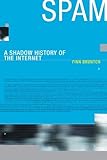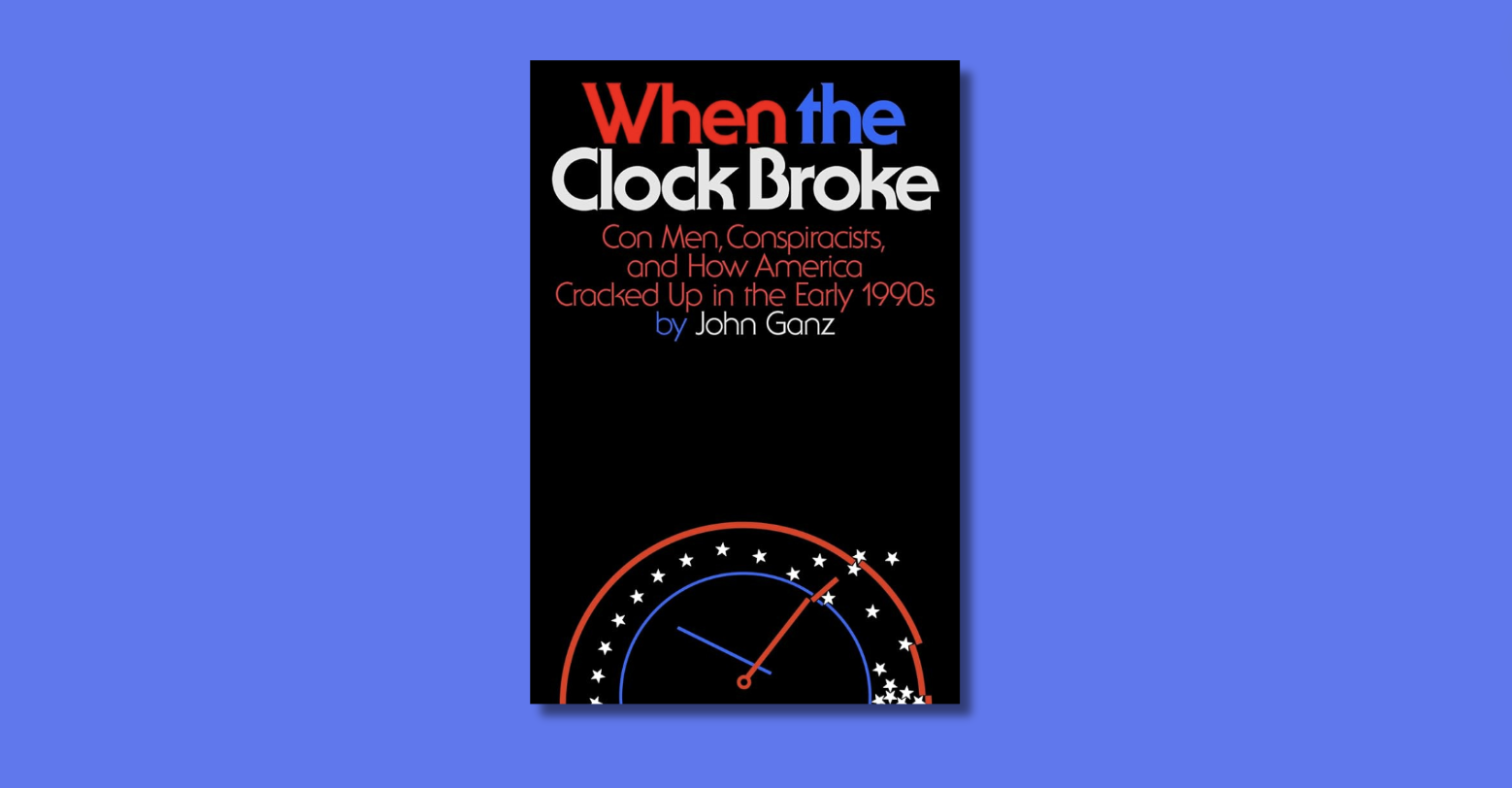
It was not long after the death of the Yasser Arafat that I received an email purporting to be from a cousin of his, soliciting my assistance in spiriting away several hundred thousand dollars held in a secret account somewhere. I had a Hotmail account at the time: its spam filters were not as effective as Gmail’s, so a lot of this kind of stuff got through. Filters have come a long way since then — and so, in turn, has spam itself. A colorful assortment of international tradespeople, drug-pushers, swindlers, and fraudsters, spammers have become a familiar feature of our digital landscape. Finn Brunton’s investigation of the question of spam, Spam: A Shadow History of the Internet — the problems of defining it, understanding it, and tackling it — takes us to the front of an ongoing and highly sophisticated technological war, a keenly contested territorial struggle for control of the information superhighway.
 The precursor to the modern Internet was the U.S. government-sponsored Usenet network. It was the product of a marriage of convenience between two very different groupings: the “Iron Triangle” of the US Department of Defense, the U.S. Congress, and the defense industry on the one hand, and an Ivory Tower of pioneering computer geeks and academics on the other. Merging the hierarchical and technocratic secretive culture of the military with the libertarian, communitarian ethic of an emergent hacker ethos, the Internet’s complex and contradictory cultural formation contained the seeds of an identity crisis that would be brought into sharp focus by the advent of spam in the 1990s.
The precursor to the modern Internet was the U.S. government-sponsored Usenet network. It was the product of a marriage of convenience between two very different groupings: the “Iron Triangle” of the US Department of Defense, the U.S. Congress, and the defense industry on the one hand, and an Ivory Tower of pioneering computer geeks and academics on the other. Merging the hierarchical and technocratic secretive culture of the military with the libertarian, communitarian ethic of an emergent hacker ethos, the Internet’s complex and contradictory cultural formation contained the seeds of an identity crisis that would be brought into sharp focus by the advent of spam in the 1990s.
“Spam,” in the Usenet era, denoted the practice of posting excessively voluminous or repetitious missives across various newsgroups. The word’s contemporary association with commercial self-promotion can be traced back to 1988, when a scammer called Rob Noha posted a message in multiple newsgroups, in waves across several days — subject line: “Poor College Student needs Your Help!!:-(” — asking readers to contribute a dollar each to “Jay-Jay’s College Fund.” The message provoked an outcry from network users, enraged that the system was being so flagrantly abused. Reluctant to resort to oppressive policing measures to combat the new scourge, the system administrators were happy to hand the matter over to mob justice:
We have received a number of inquiries about JJ…If you view these questions as the burning issues of our time, you might wish to call JJ yourself. You can reach him at: Rob Noha (aka JJ) 402/488-2586.
And they did, in droves. In time, the administrator’s withering sarcasm would prove to have been misplaced: when large-scale commercial spam began in earnest in the 1990s, this scourge did indeed become one of the “burning issues of our time,” because it highlighted critical ambiguities about the nature of the Internet. What was it for? Who owned it? Who, if anyone, had the moral, ethical, or legal right to police it?
Six years later, the issue was brought into the limelight once again, courtesy of two immigration lawyers from Arizona, Laurence Canter and Martha Siegel, who circulated a 34-line email to users of 6,000 active newsgroups, soliciting clients with the offer of assistance in filling in applications for a Green Card Lottery run by the U.S. government. Applicants needed only to send their details on a postcard to be eligible, but Canter and Siegel posed as necessary middlemen who could help with the paperwork of registration, for a fee.
The online community was predictably enraged, but powerless; in the absence of any structural system of redress, suggestions for remedial solutions were limited to the usual collective vigilantism. (“Let’s bomb ’em with huge, useless GIF files, each of us sending them several, so as to overwhelm their mailbox and hopefully get these assholes’ account cancelled by their sesames.”) Canter and Siegel later published a bestselling book, How to Make a Fortune on the Information Superhighway, which expounded an essentially Lockean argument whereby the Internet geeks who populated the network from its earliest days were characterized as backward “natives,” while the authors were cast in the role of Wild West “pioneers.” The “land,” they argued, should belong to those, like Canter and Siegel, who would work it profitably. The “natives,” stuck in a primitive social system — a volunteerist, commons-based economy — had no meaningful rights to it. Canter and Siegel spawned a wave of imitators, a veritable cottage industry of how-to guides, including Davis Hawke’s The Spambook, Jason Heckel’s instruction manuals, “How to Profit from the Internet,” and Rodona Garst’s Premier Services, “exemplary gray-area spammers,” who were (according to their brochure) “opening the doors to cyber space and smoothing the transition into these infinite markets.”
Several important developments had fundamentally altered the online landscape by the mid-1990s: the foundation of Tim Berners-Lee’s World Wide Web Consortium (W3C), alongside the emergence of the Marc Andreessen-led Mosaic web browser, meant the networked computer was about to become far easier to use for many more people, bringing into the online world “a vast influx entirely free of pre-existing intellectual commitments to the ethos of computational resource sharing, research, non-commercial use, and radically free speech.” On New Year’s Day in 1995, the ban on commercial activity on the NSFNET (the successor to Usenet) was rescinded; the Internet ceased to be the property of the U.S. government.
 By 2000, the infamous “419 message” — named after the section of the Nigerian penal code pertaining to online fraud — had established itself in the popular consciousness as the quintessential spam email. As Brunton explains, the 419 scam was merely an updated version of the “Spanish prisoner” confidence trick of years gone by: a beautiful, aristocratic woman, incarcerated by the King of Spain for oblique political reasons, needs your help to escaping; in return she will give you some part of her fortune. The plot requires money for bribing guards, hiring guides, and purchasing supplies for the trek through the mountains. Things don’t work out as planned; more money is needed for more bribes, the prisoner falls ill and needs money for a doctor, and on and on. Brunton takes us back a whole century, to a New York Times account of one such syndicate operating in the U.S. in 1898 via Havana: the “prisoner,” in this instance, is a certain Captain D. Santiago de Ochoa, imprisoned in Cuba with a trunk full of French banknotes buried in New Jersey. A variation on the theme would appear in Martin Amis’s London Fields, in which the temptress Nicola Six persuades her lovestruck admirer to part with a large amount of cash to help smuggle a couple of non-existent Thai children to safety. In its modern, digital version, the scam was being carried out on an industrial scale:
By 2000, the infamous “419 message” — named after the section of the Nigerian penal code pertaining to online fraud — had established itself in the popular consciousness as the quintessential spam email. As Brunton explains, the 419 scam was merely an updated version of the “Spanish prisoner” confidence trick of years gone by: a beautiful, aristocratic woman, incarcerated by the King of Spain for oblique political reasons, needs your help to escaping; in return she will give you some part of her fortune. The plot requires money for bribing guards, hiring guides, and purchasing supplies for the trek through the mountains. Things don’t work out as planned; more money is needed for more bribes, the prisoner falls ill and needs money for a doctor, and on and on. Brunton takes us back a whole century, to a New York Times account of one such syndicate operating in the U.S. in 1898 via Havana: the “prisoner,” in this instance, is a certain Captain D. Santiago de Ochoa, imprisoned in Cuba with a trunk full of French banknotes buried in New Jersey. A variation on the theme would appear in Martin Amis’s London Fields, in which the temptress Nicola Six persuades her lovestruck admirer to part with a large amount of cash to help smuggle a couple of non-existent Thai children to safety. In its modern, digital version, the scam was being carried out on an industrial scale:
What makes 419 so remarkable is that all of this business, this international criminal activity and transfer of wealth and the creation of a small population of specialized, almost craftsman-like spammers, is the constantly metamorphosing story of the Spanish Prisoner — possibly, quantitatively, the most told and retold story of the twenty-first century so far.
Some people lost more than others. In 2000, a businessman named James Adler unsuccessfully sued the government of Nigeria and the country’s central bank, after having paid $5.6 million over several years to participate in transferring stolen funds out of the country, with the promise of a 40 percent cut. A Czech retireee, Jiri Pasovsky, murdered a Nigerian secretary at the country’s Prague embassy in 2003 after being told that the consulate could not help him recover losses amounting to around $600,000. The phenomenon was gloatingly satirized by Nigerian actor and comedian Nkem Owoh, in his 2005 song “I Go Chop Your Dollar”:
National Airport na me get am / National Stadium na me build am / Presiden na my sister brother / You be the mugu, I be the master / Oyinbo [“white person”] I go chop your dollar / I go take your money disappear
Once a new generation of spam filters had learnt to spot the distinctive, cajoling language of commercial spam — as the programmer Paul Graham, developer of the successful Bayesian spam filter observed, “the Achilles heel of the spammers is their message” — spammers turned to innovative new techniques with increasingly mind-boggling results. Cue the arrival of “Litspam,” cut-up literary texts statistically re-assembled to take advantage of flaws in the design and development of Bayesian filters. Filtering may have killed off conventional spam — couched in the language of the respectable sales pitch — but Litspam was an entirely different register, devoid of the usual syntactic rhythm; words functioned not as signifiers but as carriers. The messages read like utter gibberish, with excerpts from Shakespeare plays or Obama speeches messily spliced with the occasional significant word.
New laws and filters had all but wiped out the world of legitimate online marketeers pushing low-margin products, leaving the field open to criminals pushing low-take-up, high-margin products. Spam had shifted from sales pitching for goods or sites to phishing, identity theft, credit card scams, or spreading viruses, worms, and other malware. It became
much more criminal, experimental and massively automated…A striking example of the move into a new kind of computationally inventive spam production. Somewhere, an algorithmic bot with a pile of text files and a mailing list made a Joycean gesture announcing spam’s modernism.
This new phase also saw the proliferation of “splogs,” spam blogs designed to deceive search engines into directing people to their pages. Comprising more than half of the total number of all blogs, these were made up of RSS feeds from other blogs and news sources, chopped up and remixed, inserting relevant links, hour after hour and day after day with minimum human supervision. “Content farms” actually produced human-authored text for some such blogs, filling the web with what Brunton calls “a nonsensical poetry of uselessness” — articles such as “How to wear a sweater vest” and reviews of deodorant containers. The content was utterly meaningless, but just about realistic enough of to attract both search engine returns and clicks.
Having established a working definition of spam — “the use of information technology infrastructure to exploit existing aggregations of human attention” — Brunton is realistically pessimistic about the prospects for a spam-free future. Because the very characteristics that enable spam to happen are also at the core of what makes the Internet what it is: that unique openness and ease of communication, the flexibility of open access, of anonymity and ambiguity. Lose these and you lose the essence of the Internet as we know it, and what remains is “a carefully specific theme park of a system,” a civic-minded, highly-managed proprietary space — in relative terms, a closed network.
The poise and elegance of Finn Brunton’s prose is all the more remarkable considering the high level of technical detail that necessarily pervades this Shadow History of the Internet. For all his pragmatism, he still dares to imagine that our contemporary online ecology might someday evolve into “media platforms that respect our attention and the finite span of our lives expended at the screen.” If there is hope, it is surely to be found precisely in the communitarian ethic of the anti-spam movement itself, in the tireless efforts of a multitude of enthusiasts driven by a desire to fulfill the tremendous potential of the digital revolution — a movement whose own history comprises, in Brunton’s words, “a decade-long case study in online collaboration, community work, and negotiation at the barricades.”
Image Credit: Flickr/epSos.de







